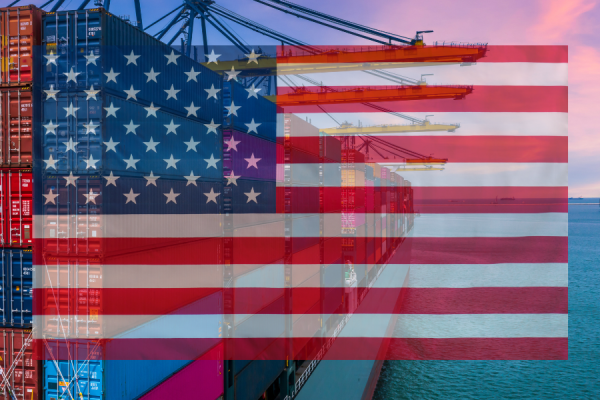
Lauren Wilgus
Published: June 09, 2025
Reciprocal Tariffs (Executive Order 14298, May 12, 2025)
- Certain imports from China now subject to a 10% tariff until August 11, 2025
- Low-value imports (≤ $800) face a reduced tariff rate of 54%.
- The $100 duty per postal item remained in effect until June 1, 2025.
Exemptions:
- The 20% across-the-board tariff under EO 14195 (as amended).
- Additional tariffs imposed against China, including antidumping/countervailing duties.
- Tariffs under Sections 201 and 301 of the Trade Act.The temporary 10% Reciprocal Tariff on goods from all other countries except Canada, Mexico, China, Cuba, Belarus, Russia, and North Korea (paused until July 9).Goods excluded under EO 14257 remain unaffected.
USCIT’s Ruling on Reciprocal Tariffs
On May 28, 2025, USCIT (“United States Court of International Trade”) issued a permanent injunction concluding that tariffs imposed by the President under the International Emergency Economic Powers Act (“IEEPA”) exceeded the President’s statutory authority, negating the following tariffs
- 10% baseline tariff
- Higher country-specific reciprocal tariffs due to go into effect on July 9 for most countries and August 12 for China
- Additional fentanyl tariffs
On May 29, 2025, the U.S. Court of Appeals for the Federal Circuit temporarily stayed the USCIT decision pending a decision on a more permanent stay until all appeals conclude. As a result, the tariffs remain in effect for now.
USTR Section 301 Actions
Final Rule on Chinese Maritime Sector
- Chinese operators and owners will face a $50/net ton port fee starting October 14, 2025, increasing by $30 per year over three years
- Chinese-built vessels not Chinese-owned/controlled: $18/net ton or $120/container, whichever is higher; increases annually until 2028.
- Fees applied per U.S. voyage, limited to five times/year per ship.
- Non-U.S.-built vehicle carriers: $0 for first 180 days, then $150/CEU.
- Starting April 17, 2028, phased restrictions will require increasing % of U.S. LNG exports to be carried on U.S.-built, U.S.-operated vessels over 22 years.
Exceptions:
- US-owned or US-flagged vessels enrolled in the Voluntary Intermodal Sealift Agreement, the Maritime Security Program, the Tanker Security Program, or the Cable Security Program.
- Vessels arriving empty or in ballast.
- Vessels with a capacity of equal to or less than: 4,000 TEUs (container ships), 55,000 DWT (breakbulk or general cargo), or an "individual bulk capacity" of 80,000 DWT (bulkers).
- Vessels engaged in short-sea shipping: Vessels entering a U.S. port from a voyage of less than 2,000 nautical miles from a foreign port.
- All dedicated chemical tankers.
- US-owned vessels, where the US entity owning the vessel is controlled by US persons and is at least 75% beneficially owned by US persons.
- Laker Vessels.
Proposed Tariffs (April 17, 2025)
- USTR proposes additional tariffs on certain Chinese-origin ship-to-shore cranes and cargo handling equipment, based on President Trump’s April 9 EO on “Restoring America's Maritime Dominance.”
Notice of Proposed Modification to USTR April 17 Notice
On June 6, 2025, the US Trade Representative opened a public comment period regarding proposed modifications to its April 17 notice, including:
- A revision to Annex III providing for a targeted coverage provision for vessels in the Maritime Security Program to reduce dependence on China;
- A shift from Car Equivalent Units to net-tonnage based fees. This shift is expected to better align with commercial use, potentially reducing fees for vessels with larger structures but less cargo space;
A revision to Annex IV:
- eliminating provisions that previously allowed for the suspension of LNG export licenses. This change would apply retroactively to April 17;
- applying certain data collection requirements to vessel operators or owners; and
- applying the Annex IV restrictions to vessel owners and operators, not just charterers and service providers, which could significantly broaden the scope of enforcement to affect both domestic and foreign entities with Chinese connections
Public comments are due by July 7.
SHIPS for America Act of 2025
- Aims to expand U.S.-flag fleet to 250 vessels in 10 years, strengthen sealift readiness, and support maritime reindustrialization.
Proposals include:
- 200% duty continues on vessels repaired in China.
- New 70% duty on repairs in other foreign countries (unless waived).
- Starting FY2030, foreign-built vessels barred from the Strategic Commercial Fleet.
- Foreign vessels involved in accidents: penalty of 5x vessel value under U.S. Limitation Act (excluding separate injury fund).
- “Maritime Prosperity Zones”: offer capital gains tax exemptions for maritime investment.
- New national “Ship America” office and verification program.
- Broader eligibility for workforce programs supporting U.S. mariners and shipyards.
- Tighter restrictions on suspending shipping fees for foreign adversaries.
Cargo and Cruise Ship Taxation
Local Cruise Ship Tax Bills
- Hawaii: Bill proposes 11% cruise fare tax or $20 per passenger per port entry.
- Mexico: $5 per passenger non-resident duty, effective July 2025.
U.S. Coast Guard Cybersecurity Rule (Effective July 16, 2025)
- Final Rule published January 17, 2025, under 33 CFR Parts 101 and 160.
Applies to:
- U.S.-flagged vessels.
- Outer Continental Shelf facilities.
- Facilities under MTSA 2002 regulations.
Key Requirements
- Incident Reporting: “Reportable cyber incidents” must be reported without delay to the National Response Center. Cyber incidents are now considered “hazardous conditions.”
- Training:
- All personnel: must complete training on cyber threats, circumvention techniques, and reporting procedures.
- Key personnel: role-specific training required.
- New hires: must be trained within 5 days of system access.
- CySO Designation: Owners must designate a Cybersecurity Officer (CySO).
- Assessments and Plans:
- Cybersecurity Assessment: within 24 months, then annually or upon ownership change.
- Cybersecurity Plan: must be submitted for approval within 24 months.
- Implementation:
- Drills: twice per year.
- Exercises: at least once per year.
- Training completion within 60 days of plan approval.
- Penetration test results and plans must be available to the Coast Guard upon request.
- Waivers/Equivalence:
- Possible under specific, documented cases showing unnecessary impact or compliance with equivalent international standards.
- Compliance Consequences: Violations may result in civil penalties or operational restrictions.
- A 2–5-year delay is under consideration for U.S.-flagged vessels.
FMC Investigation: Flags of Convenience
Federal Maritime Commission is initiating an investigation into:
- Foreign flagging laws and practices, especially flags of convenience.
- Potential unfavourable shipping conditions created in U.S. foreign trade.
- This is a non-adjudicatory inquiry at this stage.
- The 90-day public comment period ends on August 20, 2025


